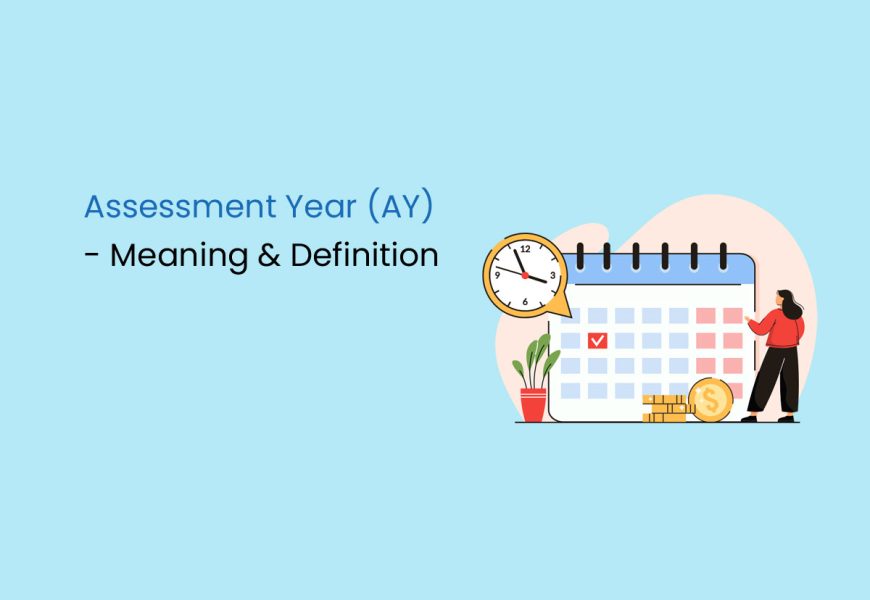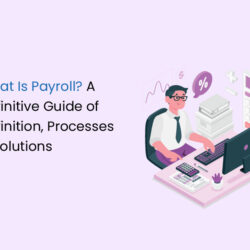The Assessment Year is an important concept to understand while navigating the intricacies of income taxation. Following the conclusion of the Financial Year, this critical period plays a pivotal role in determining the tax liability on the income earned during the preceding fiscal cycle. Let’s get into the details to demystify the Assessment Year and its profound impact on the taxation landscape.
What is an Assessment Year?
The Assessment Year, running from April 1 to March 31, stands as a fiscal bridge that connects the income earned in the previous Financial Year to its taxation in the subsequent period. This temporal overlap ensures a smooth and systematic approach to tax assessment, allowing individuals and businesses to fulfill their financial obligations accurately.
To illustrate, let’s consider the example of Assessment Year 2023-24. During the Financial Year 2022-23, spanning from April 1, 2022, to March 31, 2023, any income generated falls within the taxation ambit of the subsequent Assessment Year, 2023-24. From April 1, 2023, to March 31, 2024, individuals and entities will navigate the taxation landscape for the earnings accrued in the preceding fiscal period.
Understanding this temporal relationship is essential for effective financial planning and tax compliance. The Assessment Year framework ensures a systematic and structured approach to the taxation of income, offering individuals and businesses a unique perspective on expressing and managing their financial responsibilities.
What is a Financial Year (FY)?
The Financial Year, often denoted as FY, aligns with the calendar year but is significant in income taxation. It commences on April 1st of a calendar year and concludes on March 31st of the subsequent calendar year. This period is crucial for income assessment, tax planning, and financial management.
The term “financial year” is commonly abbreviated as “F.Y.” It is essential for an assessee to discern that while financial activities and tax planning occur within the fiscal year, the actual filing of the income tax return transpires in the subsequent year, known as the Assessment Year.
For clarity, consider the income earned in the current Financial Year (FY) 2022-23. This encompasses earnings accrued from April 1, 2022, to March 31, 2023. The nomenclature “Financial Year 2022-23” encapsulates any monetary gains realised during this specific time frame.
In simpler terms, any funds earned by an individual or entity between April 1, 2022, and March 31, 2023, fall under the umbrella of income for the Financial Year 2022-23. This approach assists in seamless financial planning and emphasises the unique timeline for income assessment and taxation.
The Indian Fiscal Year
In India, the fiscal year spans from April 1 to March 31. The Assessment Year (AY) 2023-24 corresponds to the review of the Financial Year (FY) 2022-23. While this timeline is generally consistent, variations may occur in specific circumstances.
| Period | Financial Year | Previous Year | Assessment Year |
|---|---|---|---|
| 1 April 2018 to 31st March 2019 | 2018-19 | 2018-19 | 2019-20 |
| 1 April 2019 to 31st March 2020 | 2019-20 | 2019-20 | 2020-21 |
| 1 April 2020 to 31st March 2021 | 2020-21 | 2020-21 | 2021-22 |
| 1 April 2021 to 31st March 2022 | 2021-22 | 2021-22 | 2022-23 |
| 1 April 2022 to 31st March 2023 | 2022-23 | 2022-23 | 2023-24 |
This chronological representation illustrates the consistent commencement and conclusion of the financial and assessment years in India over the recent years.
Difference between Financial Year (FY) vs Assessment Year (AY)
A person’s financial year signifies the period during which income is received, forming the basis for taxation. This cycle typically begins on April 1 and concludes on March 31. The subsequent assessment year, commencing after the financial year concludes, is dedicated to evaluating the prior year’s earnings, collecting taxes, and filing the Income Tax Return (ITR).
For instance, consider the financial year starting from April 1, 2022, to March 31, 2023, designated as Financial Year 2022-23. This period is pivotal for income assessment. Following the financial year’s culmination, the assessment year begins, leading to AY 2023-24. During this period, the revenue earned in the preceding financial year is scrutinised, taxes are collected, and individuals or entities file their Income Tax Returns (ITR).
In essence, the financial year serves as the operational timeline for income accrual, while the assessment year facilitates the systematic review and taxation procedures, ensuring a seamless and organised approach to the income tax process.
Financial Year (FY) vs Assessment Year (AY)
| Aspect | Financial Year | Assessment Year |
|---|---|---|
| Definition | The period when income is earned. | The subsequent period when tax returns are filed. |
| Associated Period | When salaried professionals and seniors earn income. | When the earned income is assessed for taxation. |
| Taxation and Evaluation | Taxation is based on the income earned in this year. | Evaluation and taxation occur in this assessment year. |
| Income Tax Return Forms | Specialised forms for reporting and taxing FY income. | Forms designed for assessing and taxing income in AY. |
| Taxing Earned Income | Income is earned during the financial year. | Taxing occurs in the assessment year post-earning. |
ITR Forms and Assessment Years
The inclusion of an Assessment Year in Income Tax Return (ITR) forms serves a crucial purpose tied to the timeline of income assessment and taxation. The concept stems from the fact that income earned in any financial year is assessed and taxed in the subsequent year.
Taxing income immediately as it is earned is not feasible. Various circumstances, both favourable and adverse, can unfold at any point during the financial year—whether at its inception, midpoint, or conclusion. To accommodate this practicality, the Assessment Year is introduced.
Individuals or entities must specify the Assessment Year when they file their income tax returns. This ensures a systematic and organised approach to the taxation process, allowing for the proper evaluation and calculation of taxes on income earned during the preceding financial year. In essence, the Assessment Year acts as a bridge between the actual earning of income and the subsequent taxation process, facilitating a structured and effective approach to income tax filing.
FAQs on Assessment Year
When should a taxpayer file an income tax return?
Taxpayer should file their income tax return in the Assessment Year (AY), which follows the closure of the Financial Year.
How do I calculate my income and tax liability for the purpose of filing an income tax return?
You should calculate your income for the entire Financial Year and determine the tax payable. It is mandatory to file an income tax return when your income exceeds Rs. 2.5 lakh.
How do I pay the tax on my income?
You can pay the tax online before filing the income tax return.
Can I claim credit for TDS, advance tax, or TCS paid or deducted from my income?
At the time of filing the return, you can claim credit for advance tax, TDS, and TCS paid during the Financial Year.





















